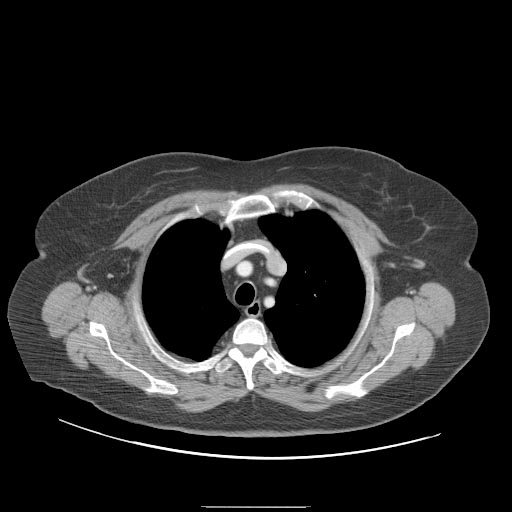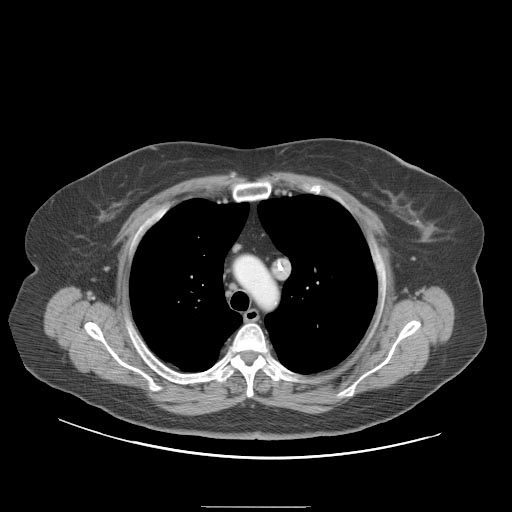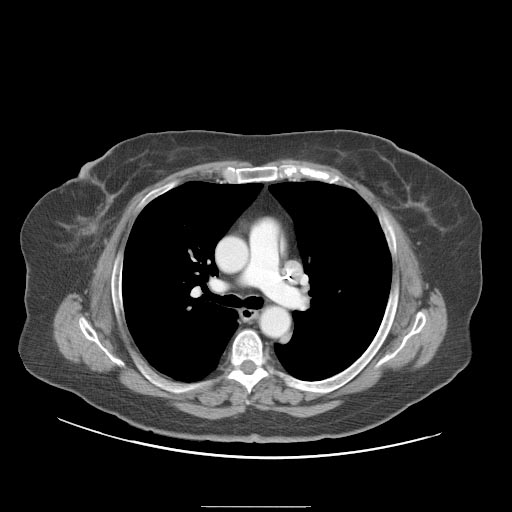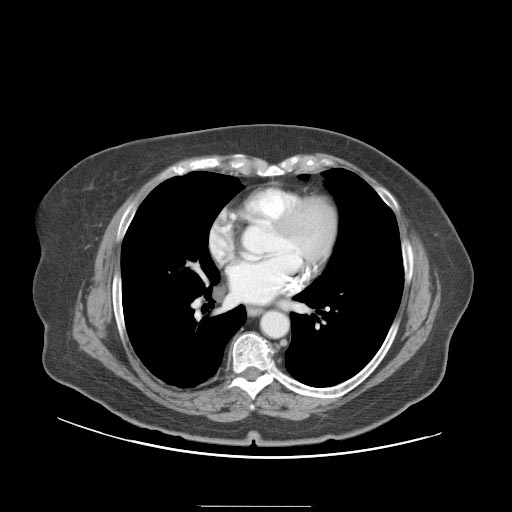Persistent left superior vena cava (patient information): Difference between revisions
| (24 intermediate revisions by 6 users not shown) | |||
| Line 1: | Line 1: | ||
'''For the WikiDoc page for this topic, click [[Persistent left superior vena cava|here]]''' | '''For the WikiDoc page for this topic, click [[Persistent left superior vena cava|here]]''' | ||
{{Persistent left superior vena cava (patient information)}} | |||
{{ | {{CMG}}; '''Associate Editor(s)-In-Chief:''' Jinhui Wu, M.D.; [[Priyamvada Singh|Priyamvada Singh, M.B.B.S.]] [mailto:psingh13579@gmail.com] '''Assistant Editor(s)-In-Chief:''' [[Kristin Feeney|Kristin Feeney, B.S.]] [mailto:kfeeney@elon.edu] | ||
==Overview== | |||
Persistent left superior vena cava (PLSVC) is a very rare and yet the most commonly described thoracic venous anomaly in medical literature. Some patient may be associated with other congenital heart disease, such as ventricular septal defect, atrioventricular septal defect. Symptoms depend on where left superior vena cava flows to. If if flows to right atria, many patients of persistent left superior vena cava appear without symptoms. Otherwise, patients may appear [[anoxemia]]. [[Echocardiography]] and cardiac MRI can tell the diagnosis of persistent left superior vena cava. The mai treatment of persistent left superior vena cava is [[surgery]]. Prognosis of persistent left superior vena cava depends on where left superior vena cava flows to. | |||
==What are the symptoms of persistent left superior vena cava?== | |||
The signs and symptoms depends on where the left superior vena cava flows to. If it finally flows to right atria, patients may have no sign or aymptom. But if the left superior vena cava flows to flows to left atria, symptoms may include [[anoxemia]], such as [[fatigue]], [[weakness]], [[dizziness]] and [[shortness of breath]]. | |||
== | ==Who is at highest risk?== | ||
The cause of persistent left superior vena cava is not clear. Some patients with persistent left superior vena cava have other congenital heart disease. | |||
== | ==When to seek urgent medical care?== | ||
Call your health care provider if your baby has symptoms of persistent left superior vena cava. If one emerges the following symptoms, seeking urgent medical care as soon as possible: | |||
:*[[Shortness of breath]] | |||
==How to know you have persistent left superior vena cava?== | ==How to know you have persistent left superior vena cava?== | ||
| Line 21: | Line 22: | ||
:*Chest CT or MRI: A chest CT or MRI can demonstrate the details of the heart extremely well, such as the great vessles, vascular, atrial and ventricular structures and their relationships to one another. | :*Chest CT or MRI: A chest CT or MRI can demonstrate the details of the heart extremely well, such as the great vessles, vascular, atrial and ventricular structures and their relationships to one another. | ||
:*[[Cardiac catheterization]]: This is not a common diagnostic measure for persistent left superior vena cava. In a catheter room, the doctor threads a thin tube through a blood vessel in the patient's arm or groin to an artery in the heart and injects dye to see great vessles, atria and ventricles on an x-ray. Cardiac catheterization can reveal associated cardiac abnormalities are known or suspected. | :*[[Cardiac catheterization]]: This is not a common diagnostic measure for persistent left superior vena cava. In a catheter room, the doctor threads a thin tube through a blood vessel in the patient's arm or groin to an artery in the heart and injects dye to see great vessles, atria and ventricles on an x-ray. Cardiac catheterization can reveal associated cardiac abnormalities are known or suspected. | ||
==Treatment options== | ==Treatment options== | ||
Treatment for patients with persistent left superior vena cava is observation and surgery. The selection depends on where left superior vena cava flows to and other association congenital heart disease. | |||
:*Observation: If left superior vena cava flows to right atria, patient may have no symptom. This type of patient need no treatment. Regular check may need to observe the child. | |||
:*Surgery: Surgical treatment of persistent left superior vena cava may be performed to direct the flow of left superior vena cava from left atria to right atria. At the same time, other conginital defect mey be repaired. During the surgery, the anesthetist gives medicine to make the child sleepy and comfortable. Then the surgeons make a small cut between the ribs to reach the heart and repair the defects. | |||
==Diseases with similar symptoms== | ==Diseases with similar symptoms== | ||
:*[[Ventricular septal defect]] | |||
:*[[Atrioventricular septal defect]] | |||
==Where to find medical care for persistent left superior vena cava?== | ==Where to find medical care for persistent left superior vena cava?== | ||
[http://maps.google.com/maps?f=q&hl=en&geocode=&q={{urlencode:{{#if:{{{1|}}}|{{{1}}}|persistent left superior vena cava}}}}&sll=37.0625,-95.677068&sspn=65.008093,112.148438&ie=UTF8&ll=37.0625,-95.677068&spn=91.690419,149.414063&z=2&source=embed Directions to Hospitals Treating persistent left superior vena cava] | [http://maps.google.com/maps?f=q&hl=en&geocode=&q={{urlencode:{{#if:{{{1|}}}|{{{1}}}|persistent left superior vena cava}}}}&sll=37.0625,-95.677068&sspn=65.008093,112.148438&ie=UTF8&ll=37.0625,-95.677068&spn=91.690419,149.414063&z=2&source=embed Directions to Hospitals Treating persistent left superior vena cava] | ||
== | ==What to expect (Outlook/Prognosis)?== | ||
The prognosis of persistent left superior vena cava depends upon where the left superior vena cava flows to. The prognosis of a persistent left superior vena cava that flows to left atria is worse than that if it flows to the right atria. | |||
==Prevention== | |||
The preventive measure of persistent left superior vena cava is unknown. | The preventive measure of persistent left superior vena cava is unknown. | ||
== | ==Imaging examples== | ||
<div align="left"> | |||
<gallery heights="175" widths="175"> | |||
== | Image:Left-SVC-004.jpg | ||
Image:Left-SVC-005.jpg | |||
Image:Left-SVC-006.jpg | |||
Image:Left-SVC-007.jpg | |||
</gallery> | |||
</div> | |||
==Sources== | |||
http://smj.sma.org.sg/4803/4803cr7.pdf | http://smj.sma.org.sg/4803/4803cr7.pdf | ||
{{WH}} | {{WH}} | ||
{{WS}} | {{WS}} | ||
[[Category:Patient | |||
[[Category:Pediatrics]] | |||
[[Category:Cardiology]] | |||
[[Category:Congenital heart disease]] | |||
[[Category:Cardiology patient information]] | |||
[[Category:Congenital heart disease patient information]] | |||
[[Category:Pediatrics patient information]] | |||
[[Category:Patient information]] | |||
[[Category:Mature chapter]] | |||
[[Category:Disease]] | |||
Latest revision as of 15:13, 7 June 2013
For the WikiDoc page for this topic, click here
|
Persistent left superior vena cava |
|
Where to find medical care for Persistent left superior vena cava? |
|---|
|
Persistent left superior vena cava On the Web |
|
Directions to Hospitals Treating Persistent left superior vena cava |
|
Risk calculators and risk factors for Persistent left superior vena cava |
Editor-In-Chief: C. Michael Gibson, M.S., M.D. [1]; Associate Editor(s)-In-Chief: Jinhui Wu, M.D.; Priyamvada Singh, M.B.B.S. [2] Assistant Editor(s)-In-Chief: Kristin Feeney, B.S. [3]
Overview
Persistent left superior vena cava (PLSVC) is a very rare and yet the most commonly described thoracic venous anomaly in medical literature. Some patient may be associated with other congenital heart disease, such as ventricular septal defect, atrioventricular septal defect. Symptoms depend on where left superior vena cava flows to. If if flows to right atria, many patients of persistent left superior vena cava appear without symptoms. Otherwise, patients may appear anoxemia. Echocardiography and cardiac MRI can tell the diagnosis of persistent left superior vena cava. The mai treatment of persistent left superior vena cava is surgery. Prognosis of persistent left superior vena cava depends on where left superior vena cava flows to.
What are the symptoms of persistent left superior vena cava?
The signs and symptoms depends on where the left superior vena cava flows to. If it finally flows to right atria, patients may have no sign or aymptom. But if the left superior vena cava flows to flows to left atria, symptoms may include anoxemia, such as fatigue, weakness, dizziness and shortness of breath.
Who is at highest risk?
The cause of persistent left superior vena cava is not clear. Some patients with persistent left superior vena cava have other congenital heart disease.
When to seek urgent medical care?
Call your health care provider if your baby has symptoms of persistent left superior vena cava. If one emerges the following symptoms, seeking urgent medical care as soon as possible:
How to know you have persistent left superior vena cava?
- Echocardiography: This kind of painless test can help the doctor closely examine persistent left superior vena cava. It uses sound waves to produce an image of the ventricles, atrium and great vessles. Echocardiogram can tell whether left superior vena cava flows to right areia or not. Further more, the doctor can measure the speed of blood flow by echocardiogram.
- Chest x-ray: An x-ray image of chest allows the doctor to check the size and shape of your great vessles and heart.
- Chest CT or MRI: A chest CT or MRI can demonstrate the details of the heart extremely well, such as the great vessles, vascular, atrial and ventricular structures and their relationships to one another.
- Cardiac catheterization: This is not a common diagnostic measure for persistent left superior vena cava. In a catheter room, the doctor threads a thin tube through a blood vessel in the patient's arm or groin to an artery in the heart and injects dye to see great vessles, atria and ventricles on an x-ray. Cardiac catheterization can reveal associated cardiac abnormalities are known or suspected.
Treatment options
Treatment for patients with persistent left superior vena cava is observation and surgery. The selection depends on where left superior vena cava flows to and other association congenital heart disease.
- Observation: If left superior vena cava flows to right atria, patient may have no symptom. This type of patient need no treatment. Regular check may need to observe the child.
- Surgery: Surgical treatment of persistent left superior vena cava may be performed to direct the flow of left superior vena cava from left atria to right atria. At the same time, other conginital defect mey be repaired. During the surgery, the anesthetist gives medicine to make the child sleepy and comfortable. Then the surgeons make a small cut between the ribs to reach the heart and repair the defects.
Diseases with similar symptoms
Where to find medical care for persistent left superior vena cava?
Directions to Hospitals Treating persistent left superior vena cava
What to expect (Outlook/Prognosis)?
The prognosis of persistent left superior vena cava depends upon where the left superior vena cava flows to. The prognosis of a persistent left superior vena cava that flows to left atria is worse than that if it flows to the right atria.
Prevention
The preventive measure of persistent left superior vena cava is unknown.
Imaging examples
Sources
http://smj.sma.org.sg/4803/4803cr7.pdf Template:WH Template:WS



